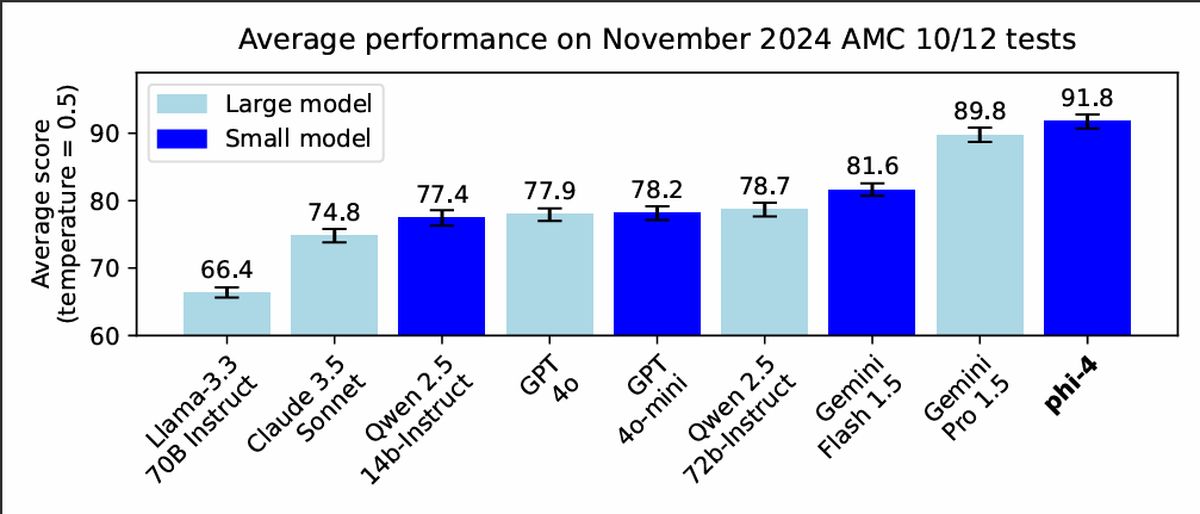Microsoft Phi-4 AI tackles complex math with 14B parameters

Microsoft has launched Phi-4, a new generative AI model boasting 14 billion parameters, designed to tackle complex mathematical problems efficiently. Announced on December 12, 2024, this model marks a significant advancement in AI technology amid a growing demand for efficient computing solutions. Phi-4 is currently accessible on Microsoft’s Azure AI Foundry for research purposes under a license agreement.
The Phi family of generative AI models aims to optimize performance while minimizing resource consumption. Microsoft claims that Phi-4 delivers improved mathematical reasoning abilities compared to its predecessors. The boost in performance stems from a combination of higher-quality training data and unspecified post-training enhancements. Compared to other smaller models like GPT-4o mini and Google’s Gemini 2.0 Flash, Phi-4 competes aggressively in functionality and speed while requiring fewer computational resources.
Microsoft’s introduction of Phi-4 challenges the prevailing notion of “bigger is better” in AI model development. While other models, such as OpenAI’s GPT-4o and Google’s Gemini Ultra, operate with hundreds of billions of parameters, Phi-4 combines its streamlined architecture with superior performance in mathematical reasoning. This efficiency could shift the landscape of enterprise AI deployment, making advanced capabilities more accessible to businesses with limited computing budgets.
 (Image: Microsoft)
(Image: Microsoft)
There is growing interest in developing smaller, high-performing models capable of delivering competitive results without necessitating massive computational resources. This approach could benefit mid-sized companies that previously shied away from integrating large language models due to costs and complexity. The implications of Phi-4’s launch may ripple across various sectors, prompting organizations to reconsider their AI strategies.
Microsoft rolls out Copilot Vision that reads the web with you
Phi-4 has shown exceptional aptitude in mathematical problem-solving. The model performed impressively on standardized tests such as the Mathematical Association of America’s American Mathematics Competitions (AMC). Results suggest that Phi-4 can frequently outpace both larger and smaller competitors in specialized tasks, indicating that targeted designs can yield significant advantages in specific areas, such as scientific research and engineering.
 (Image: Microsoft)
(Image: Microsoft)
This specialized performance might prompt businesses to reassess the value of broader capabilities offered by larger models, favoring instead the precision and efficiency of something like Phi-4 in their applications. The ability to tackle rigorous mathematical challenges emphasizes its potential for diverse implementations in sectors where accuracy is paramount.
In its rollout, Microsoft is emphasizing safety and responsible AI development. Phi-4 is currently accessible on the Azure AI Foundry platform through a research license, with plans for a wider release in the future. This measured approach incorporates safety features and monitoring tools to address ongoing concerns surrounding AI risks.
Developers using the Azure AI Foundry have access to evaluation tools for assessing model quality and safety, as well as content filtering mechanisms to prevent potential misuse. Such steps signal a growing industry focus on risk management and ethical AI deployment as organizations increasingly look to integrate advanced technologies into their operations.
Featured image credit: Microsoft

